Easy Beginner’s Guide to Quilt Binding
Welcome to the world of quilting! If you're just starting your journey, you might be wondering what quilt binding is and why it’s so important. Well, quilt binding is essentially the finishing touch that frames and protects your quilt. Think of it as the icing on a cake; it not only enhances the overall look but also serves a functional purpose by securing the edges of your quilt. In this guide, we’ll delve into everything you need to know about quilt binding, from the basic techniques to choosing the right materials. So, grab your fabric and let’s get started!
Quilt binding is the final layer that goes around the edges of your quilt, giving it a polished and professional appearance. It’s not just about aesthetics; binding plays a crucial role in protecting the quilt’s raw edges, preventing fraying and wear over time. Imagine spending hours piecing together beautiful fabric squares only to have them unravel at the seams! By properly binding your quilt, you ensure that all your hard work lasts for years to come. Not only does it provide durability, but it also allows for creative expression. You can choose contrasting colors or patterns to make your quilt pop, or go for a subtle tone that complements your design. The possibilities are endless!
When it comes to quilt binding, there are several types to consider, each offering unique aesthetics and functions. Understanding these options will help you choose the right one for your quilt project. Here are the most common types:
- Single-Fold Binding: This technique involves folding the fabric once and is perfect for beginners.
- Double-Fold Binding: This method encases the raw edges, providing a more robust finish.
Each type has its own set of advantages, and knowing them can make a significant difference in your quilting experience.
Single-fold binding is a straightforward technique that involves folding your fabric in half. It’s a fantastic choice for beginners because it’s easy to manage. To create single-fold binding, cut your fabric into strips that are typically 2 to 2.5 inches wide. Then, fold the strip in half lengthwise and press it. Once you have your binding strip ready, you can attach it to the edges of your quilt. This method is quick and offers a clean finish, making it ideal for smaller projects or quilts that won't see heavy use.
On the other hand, double-fold binding gives your quilt a more substantial and durable finish. This technique involves folding the fabric twice—first in half and then again to encase the raw edges. To make double-fold binding, cut your fabric strips to the same width as single-fold, but the extra fold provides added protection. This method is especially beneficial for quilts that will be washed frequently or used regularly. The extra layer of fabric ensures that your quilt stands the test of time.
Choosing the right fabric for your quilt binding is vital for both style and functionality. You’ll want to consider factors such as color, pattern, and fabric type. For instance, if your quilt is made of bright, bold fabrics, you might opt for a solid color binding to provide contrast. Conversely, if your quilt features a more subdued palette, a patterned binding could add a fun pop without overwhelming the design. Additionally, consider the weight and texture of the fabric. A heavier fabric might be better suited for a quilt that will see a lot of use, while lighter fabrics can work well for decorative quilts.
Before you can apply the binding, it's essential to prepare your quilt properly. This involves trimming any excess fabric from the edges and squaring up your quilt. A well-prepared quilt will make the binding process smoother and ensure a cleaner finish. Start by laying your quilt flat and checking for any uneven edges. Use a rotary cutter and a ruler to trim the edges, making sure they are straight and aligned. This step is crucial because any irregularities can affect how the binding sits on the quilt.
Attaching the binding might seem daunting at first, but with the right techniques, it becomes manageable. Start by aligning the binding with the edge of the quilt and pinning it in place. Use a ¼-inch seam allowance to sew the binding down, making sure to keep the fabric taut but not stretched. As you sew, you may want to use clips instead of pins for easier handling. Once you’ve sewn the binding on, you’ll flip it over to the back of the quilt and secure it in place, either by hand-stitching or machine-stitching.
When it comes to securing your binding, you have two main choices: hand-stitching or machine-stitching. Hand-stitching offers a traditional, finished look and allows for more control, but it can be time-consuming. On the other hand, machine-stitching is quicker and provides a sturdy hold, but it may not have the same aesthetic appeal. Ultimately, the choice depends on your personal preference and the look you wish to achieve.
After you’ve attached the binding, it’s time to add those finishing touches that can elevate your quilt to the next level. Consider adding embellishments like buttons, embroidery, or decorative stitching along the binding. These small details can make a significant impact and showcase your creativity. Remember, your quilt is a reflection of your personality, so don’t be afraid to let your style shine through!
Q: What is the best fabric for quilt binding?
A: The best fabric for quilt binding is typically cotton, as it is durable and easy to work with. However, you can also use blends or specialty fabrics depending on your project’s needs.
Q: How wide should my binding strips be?
A: Binding strips are usually cut between 2 to 2.5 inches wide, but this can vary based on personal preference and the thickness of the quilt.
Q: Can I use bias binding on straight edges?
A: Yes, bias binding can be used on straight edges. It’s particularly useful for curved edges, but it works well on straight edges too.

Understanding Quilt Binding
Quilt binding is the final touch that frames and protects your quilt, much like a beautiful frame enhances a piece of art. Imagine crafting a stunning quilt only to leave its edges raw and unrefined; that would be like presenting a masterpiece without a frame! Binding not only adds a polished look but also serves a practical purpose by preventing fraying and ensuring durability. It’s the cherry on top of your quilting journey, making your hard work shine.
When you think of quilt binding, consider it as the quilt's finishing touch. It’s what gives your quilt its completed appearance and protects the edges from wear and tear. Without binding, your quilt might look unfinished, and let’s face it, nobody wants that! The binding essentially wraps around the edges of the quilt, sealing everything in and providing a clean, neat finish. It’s a crucial step that shouldn’t be overlooked.
There are a few key aspects to understand about quilt binding:
- Functionality: Binding keeps the edges of your quilt intact, preventing fraying and ensuring longevity.
- Aesthetic Appeal: The right binding can enhance the overall look of your quilt, adding contrast or complementing the quilt's colors.
- Variety of Techniques: There are different methods for applying binding, each offering a unique finish and style.
In essence, quilt binding is more than just a practical necessity; it's an art form in itself. By choosing the right binding technique and fabric, you can elevate your quilt from a simple blanket to a stunning piece of craftsmanship. Whether you prefer a subtle, matching binding or a bold contrast, the choice is yours, and it can dramatically change the quilt's overall appearance.
As you embark on your quilting journey, remember that binding is your quilt's final bow—it's what makes your hard work and creativity shine. So, embrace the process, experiment with different styles, and watch as your quilt transforms into a beautiful, finished piece that you’ll be proud to show off!

Types of Quilt Binding
When it comes to quilt binding, there’s a world of options that can truly transform the look of your quilt. Understanding the different types of quilt binding is essential for any beginner quilter aiming to achieve a polished and professional finish. Each type of binding not only affects the aesthetic of your quilt but also its durability and functionality. So, let’s dive into the most common types of quilt binding that you can choose from!
First up, we have Single-Fold Binding. This technique is as straightforward as it sounds; you simply fold the fabric once and attach it to the quilt. It’s perfect for those who are just starting out because it requires minimal sewing skills and allows for quick application. You'll find that single-fold binding is often used for smaller projects or quilts that won’t see heavy use. Its simplicity makes it a favorite among beginners!
Next, let’s talk about Double-Fold Binding. This method involves folding the fabric twice, encasing the raw edges of your quilt in a protective layer. It's more durable than single-fold binding and is ideal for larger quilts or those that will be washed frequently. The double-fold technique not only provides a robust finish but also gives your quilt a more professional appearance. It’s like putting a beautiful frame around a piece of artwork—suddenly, everything looks more complete!
In addition to these two primary types, there are also variations such as Bias Binding and Continuous Binding. Bias binding is cut on the diagonal of the fabric, allowing it to stretch and curve around corners more easily, making it a great choice for quilts with intricate shapes. On the other hand, continuous binding is a method that allows you to create long strips of binding without having to sew multiple pieces together, saving you time and effort.
To help you visualize these options, here’s a quick comparison table:
| Type of Binding | Description | Best For |
|---|---|---|
| Single-Fold Binding | Fabric folded once, simple to apply | Small projects, beginners |
| Double-Fold Binding | Fabric folded twice, encases raw edges | Larger quilts, frequent washing |
| Bias Binding | Cut on the diagonal, stretches easily | Curved edges, intricate designs |
| Continuous Binding | Long strips of binding without seams | Time-saving for large quilts |
As you can see, each type of quilt binding has its unique characteristics and advantages. Choosing the right one can significantly influence the final look and feel of your quilt. So, consider your project’s needs, your skill level, and the overall design you want to achieve. Remember, binding is not just a finishing touch; it’s the frame that completes your quilt masterpiece!
Q: What is the best type of binding for beginners?
A: Single-fold binding is often recommended for beginners due to its simplicity and ease of application.
Q: Can I use any fabric for quilt binding?
A: While you can technically use any fabric, it’s best to choose a fabric that complements your quilt design and has enough durability to withstand wear and tear.
Q: How do I know how much binding fabric I need?
A: A general rule of thumb is to calculate the perimeter of your quilt and divide by 40 to determine how many yards of fabric you’ll need for binding.
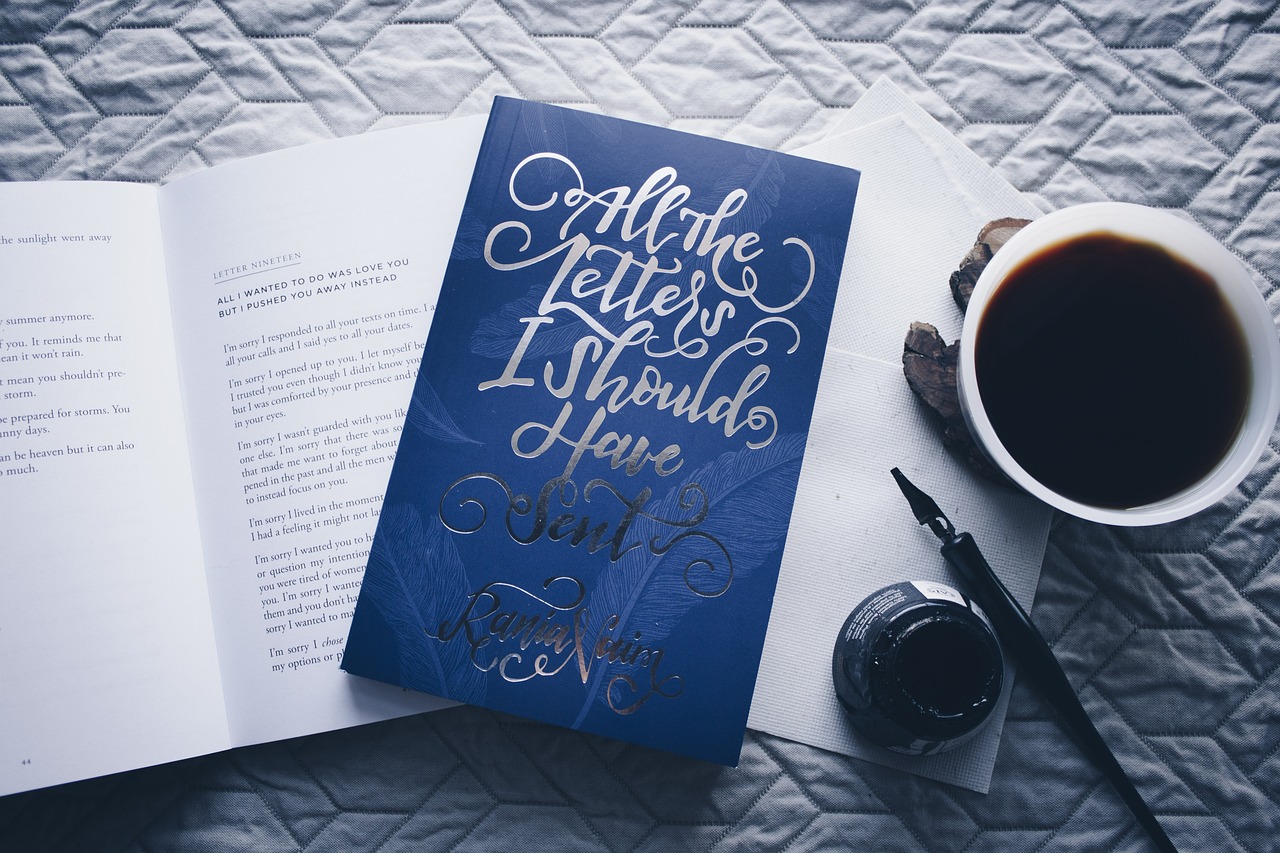
Single-Fold Binding
Single-fold binding is a fantastic starting point for beginners venturing into the world of quilt binding. This technique is as straightforward as it sounds—essentially, you take a strip of fabric, fold it in half lengthwise, and attach it to the edges of your quilt. It’s like giving your quilt a stylish frame that not only enhances its appearance but also protects those raw edges from fraying. Imagine wrapping a gift; you want it to look beautiful and be secure, right? That’s exactly what single-fold binding does for your quilt!
What makes single-fold binding particularly appealing is its simplicity. You don’t need a ton of fancy tools or complicated techniques to get started. All you need is some fabric, a rotary cutter, a ruler, and your trusty sewing machine. The beauty of this method lies in its versatility. You can use it on quilts of all sizes, from small baby quilts to larger bed quilts. Plus, it allows you to play with different fabric choices, giving your quilt a unique personality.
To create single-fold binding, follow these easy steps:
- Measure and Cut: First, measure the perimeter of your quilt to determine how much binding you will need. A good rule of thumb is to cut your fabric strips 2 to 2.5 inches wide, depending on how much of the quilt edge you want to cover.
- Press the Fabric: Once cut, fold the strip in half lengthwise and give it a good press with your iron. This step creates a crease that will help you align it easily when attaching it to your quilt.
- Attach the Binding: Align the raw edges of the binding with the edge of your quilt and sew it in place, leaving a few inches at the beginning for a clean finish.
- Fold and Finish: After sewing, fold the binding over the quilt edge and pin it down. You can either hand-stitch or machine-stitch this part, depending on your preference.
As you embark on this journey of quilt binding, keep in mind that practice makes perfect. Don’t be discouraged if your first few attempts don’t turn out exactly as you envisioned. Each quilt is a learning experience, and with time, your skills will grow. Single-fold binding is a great way to build confidence as you create beautiful quilts that you can cherish for years to come.
Q: Can I use any fabric for single-fold binding?
A: Absolutely! However, it’s best to choose fabric that complements your quilt design. Cotton is a popular choice due to its durability and ease of handling.
Q: How do I determine how much fabric I need for binding?
A: Measure the perimeter of your quilt and add a little extra for seams and corners. A rough estimate is to multiply the perimeter by 1.5 for enough fabric strips.
Q: Is single-fold binding suitable for all quilt types?
A: Yes! While single-fold binding is great for beginners, it can be used on various quilts, including wall hangings and larger quilts.
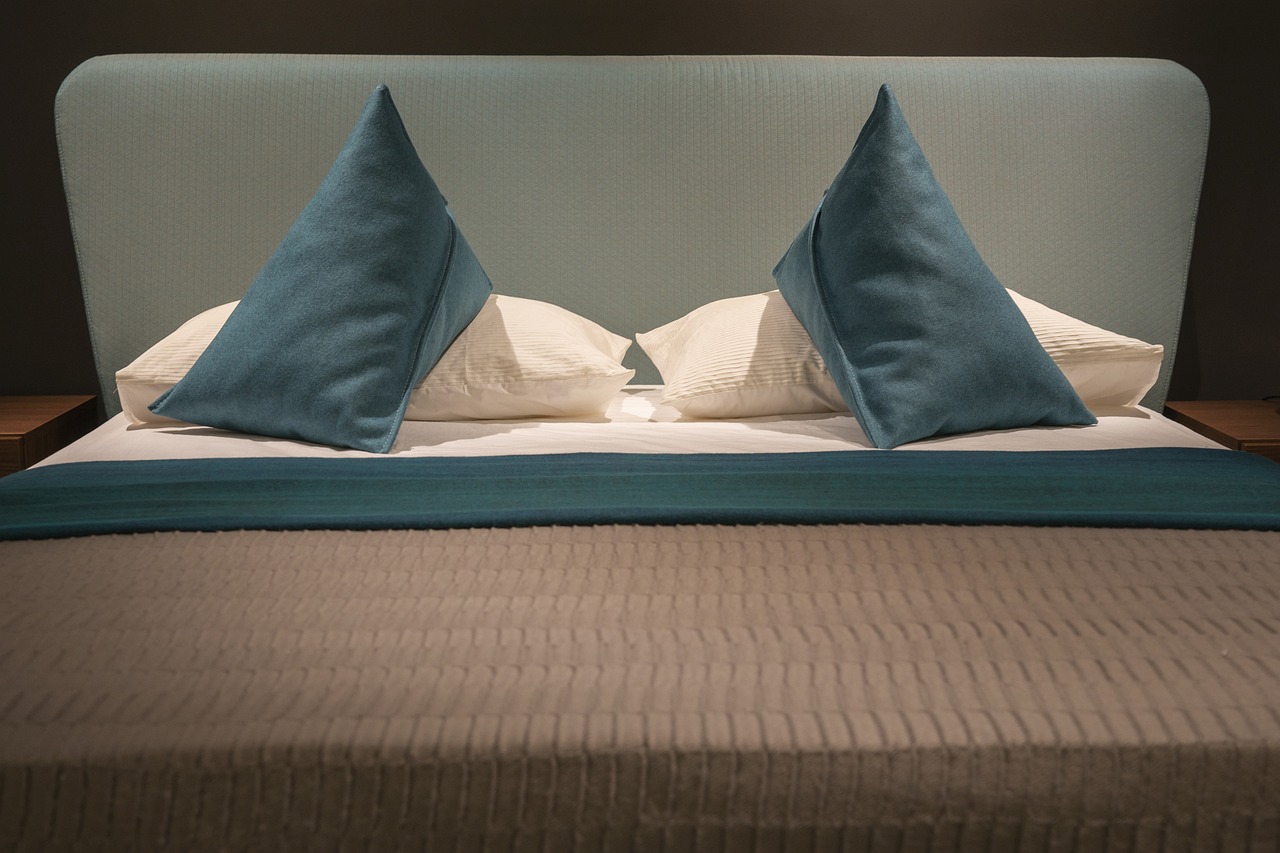
Double-Fold Binding
Double-fold binding is like the sturdy armor that protects your quilt from the elements while also giving it a polished look. Imagine wrapping your quilt in a cozy hug that not only secures the edges but also adds a beautiful finish. This technique is perfect for those who want their quilts to stand the test of time, both in durability and aesthetic appeal. By encasing the raw edges of your quilt, double-fold binding ensures that everything stays neatly in place, preventing fraying and wear.
To create double-fold binding, you’ll start with a strip of fabric that’s typically 2.5 inches wide. This width allows for a comfortable fold that can accommodate various quilt thicknesses. Here’s how you can make your own double-fold binding:
- First, cut your fabric into strips. You can use a single fabric or create a fun patchwork effect with multiple strips sewn together.
- Next, press the strip in half lengthwise, wrong sides together. This creates a crease that will guide your folding.
- Then, open the strip back up and fold each long edge towards the center crease, pressing as you go. This will create a binding strip that is now a quarter of its original width.
- Finally, fold the strip in half again along the original crease and press it one last time. Voilà! You now have your double-fold binding ready to attach to your quilt.
Attaching the double-fold binding may seem a bit intimidating at first, but once you get the hang of it, you’ll find it’s quite straightforward. Start by pinning the binding to the edge of your quilt, aligning the raw edges. Use a 1/4 inch seam allowance to sew the binding to the quilt. As you sew, keep an eye on the fabric to ensure it doesn’t shift, which can lead to uneven edges. Once you’ve sewn it on, fold the binding over to the back side of the quilt and pin it in place.
Now comes the exciting part—finishing it off! You can either hand-stitch the binding to the back of the quilt for a more traditional look or use a sewing machine for a faster finish. If you choose the machine method, be sure to sew close to the folded edge to ensure a neat appearance. This method is particularly useful if you’re looking to complete your quilt in a timely manner without sacrificing quality.
Double-fold binding not only provides a strong finish but also offers a chance to get creative. You can play around with different fabric patterns and colors to create a striking contrast or a subtle complement to your quilt. It’s like the cherry on top of a delicious sundae—adding that final touch that makes everything come together beautifully.
In summary, double-fold binding is an essential skill for any quilter looking to elevate their craft. With a bit of practice, you’ll find that this technique not only enhances the durability of your quilts but also allows for endless creative possibilities. So grab your fabric, and let’s get binding!
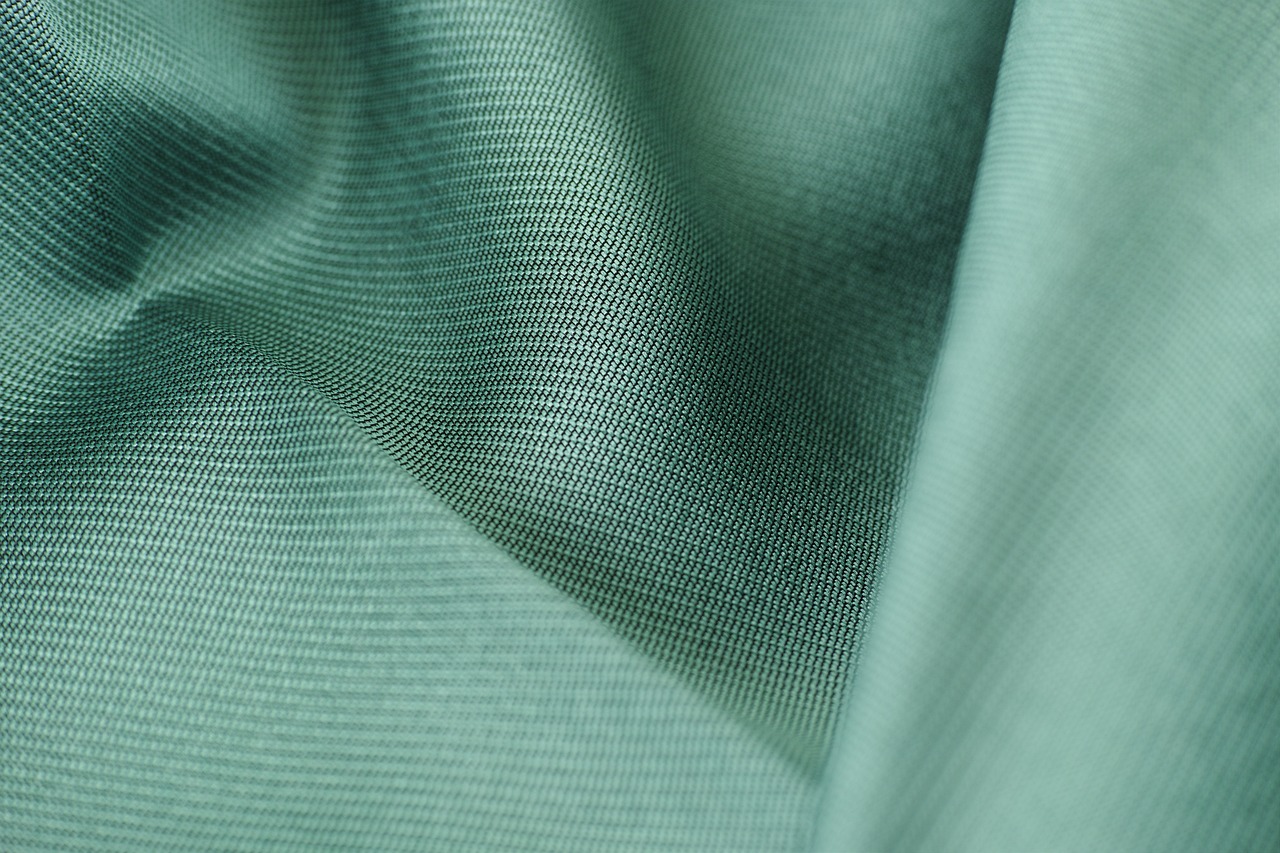
Choosing the Right Fabric
When it comes to quilt binding, is crucial for both the aesthetic appeal and functionality of your quilt. The fabric you select will not only frame your quilt but will also endure wear and tear over time. Think of it as the icing on the cake; it should be delicious yet complement the overall flavor of the quilt. So, how do you pick the perfect binding fabric? Let’s dive in!
First off, consider the weight of the fabric. Typically, quilters opt for cotton or cotton blends because they offer durability and a nice finish. However, you can also explore other options like polyester or rayon if you want something different. Each fabric has its unique texture and drape, which can significantly impact the final look of your quilt. For instance, a heavier fabric can add a sophisticated touch, while a lighter fabric may give your quilt a more casual vibe.
Next, think about the color and pattern. This is where you can really let your creativity shine! The binding should either contrast with or complement the quilt top. If your quilt is busy with patterns, you might want to go for a solid color to avoid overwhelming the viewer. Conversely, if your quilt is more subdued, a patterned binding can add that extra pop of interest. Here’s a quick tip: use a color wheel to help you find complementary colors that work well together.
Another essential factor is the fabric’s shrinkage. Before you make a final decision, it’s wise to pre-wash your fabric. This helps to prevent any surprises after your quilt is completed. Imagine spending hours on a quilt only to have the binding shrink and warp! Pre-washing ensures that your fabric behaves predictably and maintains its integrity over time.
Lastly, consider the budget. Quilting can get expensive, especially if you’re drawn to high-end fabrics. However, there are plenty of affordable options that still look great. You can often find beautiful cotton fabrics at local fabric stores or online at discounted prices. Keep an eye out for sales and clearance sections; you might just score some fantastic fabrics without breaking the bank!
In summary, when you're on the hunt for the perfect binding fabric, keep these key points in mind:
- Weight: Choose a durable fabric like cotton for longevity.
- Color and Pattern: Opt for contrasting or complementary options based on your quilt design.
- Shrinkage: Always pre-wash your fabric to avoid future issues.
- Budget: Look for quality fabrics that fit your budget.
With these considerations in mind, you'll be well on your way to selecting the ideal fabric for your quilt binding. Remember, the right fabric not only enhances the beauty of your quilt but also ensures that it stands the test of time. Happy quilting!
Q1: Can I use any fabric for quilt binding?
A1: While you can technically use any fabric, it’s best to stick with cotton or cotton blends for durability and ease of use.
Q2: How do I know if the fabric will match my quilt?
A2: Use a color wheel to find complementary colors, or bring a swatch of your quilt fabric when shopping for binding.
Q3: Is pre-washing fabric necessary?
A3: Yes! Pre-washing helps prevent shrinkage and ensures your quilt maintains its shape after washing.
Q4: What if I can’t find the perfect fabric?
A4: Don’t hesitate to mix and match fabrics! Sometimes, a little creativity can lead to stunning results.
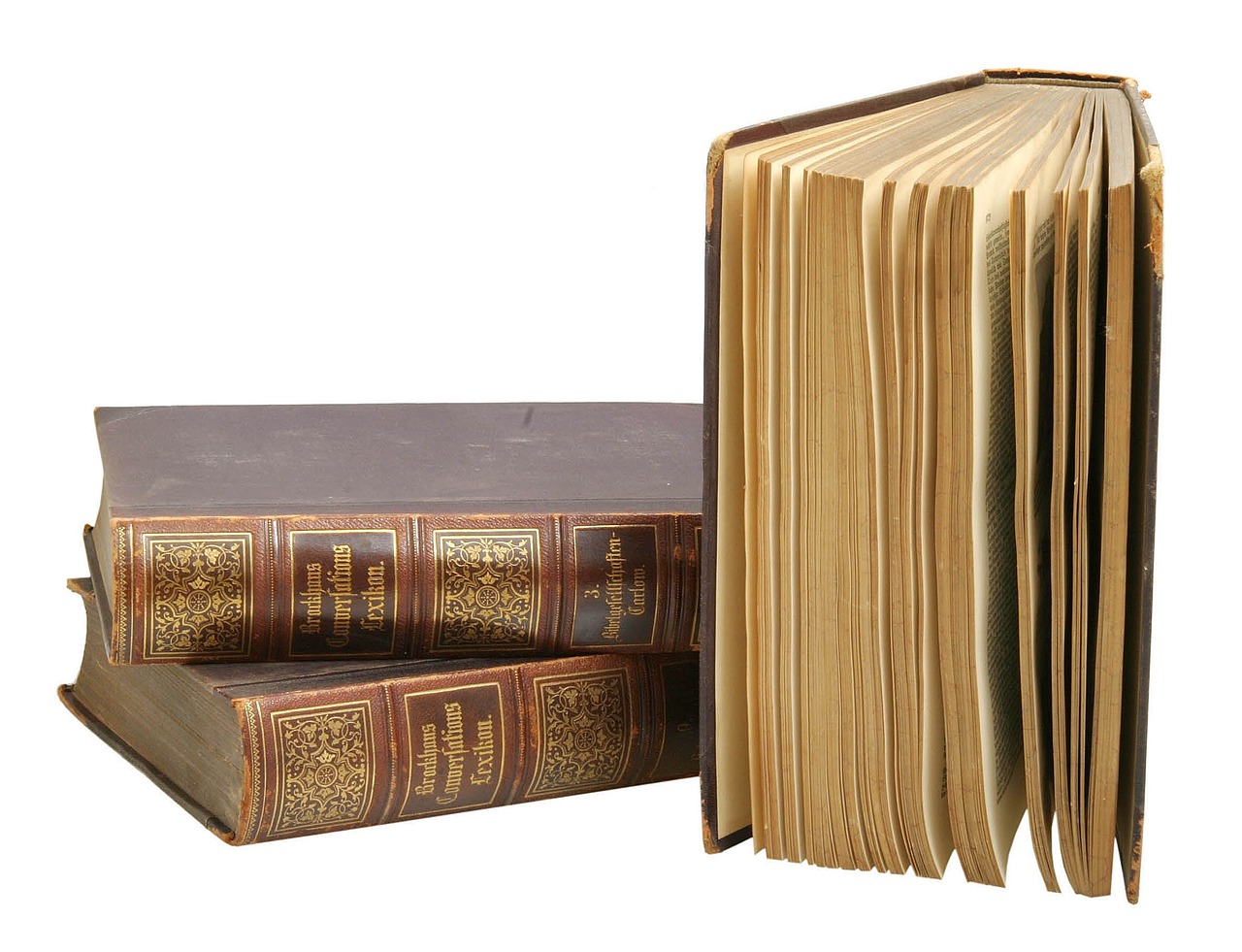
Preparing Your Quilt for Binding
Getting your quilt ready for binding is like preparing a canvas for a masterpiece; it’s all about making sure the edges are clean, crisp, and ready to shine. Before you dive into the exciting world of binding, take a moment to ensure your quilt is in top shape. This preparation phase is crucial and can significantly impact the final look of your quilt.
First things first, you'll want to trim your quilt edges. Use a rotary cutter and ruler to carefully trim away any excess fabric or uneven edges. This step is essential because it creates a clean line that will make the binding process smoother. Think of it as giving your quilt a fresh haircut; it needs to look neat before you can style it!
Next, squaring up your quilt is equally important. This means ensuring that all corners are at right angles and that the edges are straight. A quilt that isn’t squared up can lead to binding that looks crooked or uneven. To square up your quilt, lay it flat on a large surface and measure from the center outwards, adjusting as necessary. A square quilt not only looks better but also makes the binding process much easier.
Once your quilt is trimmed and squared, it’s time to inspect the quilt top and backing for any loose threads or fabric that might snag during binding. Take a pair of scissors and snip away any stray threads. This attention to detail will ensure that your finished quilt has a polished and professional appearance.
Now, let’s talk about the importance of pressing your quilt edges. Pressing is like giving your quilt a warm hug, smoothing out any wrinkles and ensuring that everything lays flat. Use a hot iron to press the edges of your quilt, making them easier to work with when you attach the binding. This will also help your binding lay flat and look neat once it’s sewn on.
In summary, preparing your quilt for binding is a vital step that should not be overlooked. By trimming, squaring up, inspecting for loose threads, and pressing your quilt edges, you set the stage for a beautiful finish. Remember, a little preparation goes a long way in quilting, and your finished quilt will thank you for it!
- Why is it important to square up my quilt before binding? Squaring up your quilt ensures that the edges are even and straight, which helps the binding to lay flat and look professional.
- What tools do I need to prepare my quilt for binding? A rotary cutter, a ruler, scissors, and an iron are essential tools for trimming, squaring, and pressing your quilt.
- Can I skip the pressing step when preparing my quilt? While it’s possible to skip pressing, doing so can lead to uneven binding. Pressing helps to create a smoother finish.

Attaching the Binding
Attaching the binding can seem like a daunting task, especially if you're new to quilting. However, with a little practice and the right techniques, you'll find that it’s not only manageable but also quite satisfying! Think of binding as the cherry on top of your quilt—it’s what gives it that polished, finished look. So, let’s dive into the steps to securely attach your binding to the quilt edges.
First things first, you’ll want to prepare your binding strips. Typically, these strips should be about 2.5 inches wide, but you can adjust this based on your quilt’s thickness and your personal preference. Once you have your strips cut, it's time to sew them together to create one long piece. This is often done using a diagonal seam, which helps reduce bulk at the corners. To do this, lay two strips right sides together, making a 90-degree angle, and sew from one corner to the other. Trim the excess fabric and press the seam open.
Now that you have your binding ready, it’s time to attach it to your quilt. Start by aligning the raw edge of your binding with the raw edge of your quilt top. Use a quarter-inch seam allowance to sew the binding to the quilt. As you sew, be sure to leave a tail of about 10 inches at the beginning and end of your binding strip. This will come in handy later when you join the ends of your binding seamlessly.
As you approach the corners, you’ll want to create a mitered corner for a professional finish. To do this, stop sewing about a quarter-inch from the corner, then lift your presser foot and pivot your quilt. Fold the binding up so it creates a triangle, then fold it back down over the quilt edge. This technique not only looks great but also helps the binding lay flat when you finish sewing.
Once you’ve sewn all the way around the quilt, it’s time to join the ends of your binding. Lay the two ends flat, ensuring they overlap slightly. Trim them to the correct length, then sew them together using the same method you used to create the long strip. After that, fold the binding over the edge of the quilt, encasing the raw edges, and pin it in place.
Now you have the choice between two methods to finish your binding: hand-stitching or machine-stitching. Hand-stitching gives a more traditional look and can be quite relaxing, while machine-stitching is faster and can be more durable. Whichever method you choose, be sure to secure the binding well to ensure it lasts through many washes and cuddles!
In summary, attaching the binding is a crucial step that can elevate your quilt from good to stunning! With practice, you’ll become more confident in your technique, and soon, you’ll be attaching bindings like a pro. Remember, every quilt is a learning opportunity, so don’t stress if it doesn’t turn out perfect the first time. Enjoy the process and let your creativity shine!
- What is the best fabric for quilt binding? Cotton fabric is typically the best choice due to its durability and ease of use.
- How wide should my binding strips be? A width of 2.5 inches is standard, but you can adjust based on your quilt's thickness.
- Can I use a different color for my binding? Absolutely! Using a contrasting color can create a beautiful frame for your quilt.
- Do I need to pre-wash my binding fabric? It’s a good idea to pre-wash to prevent any shrinkage later on.
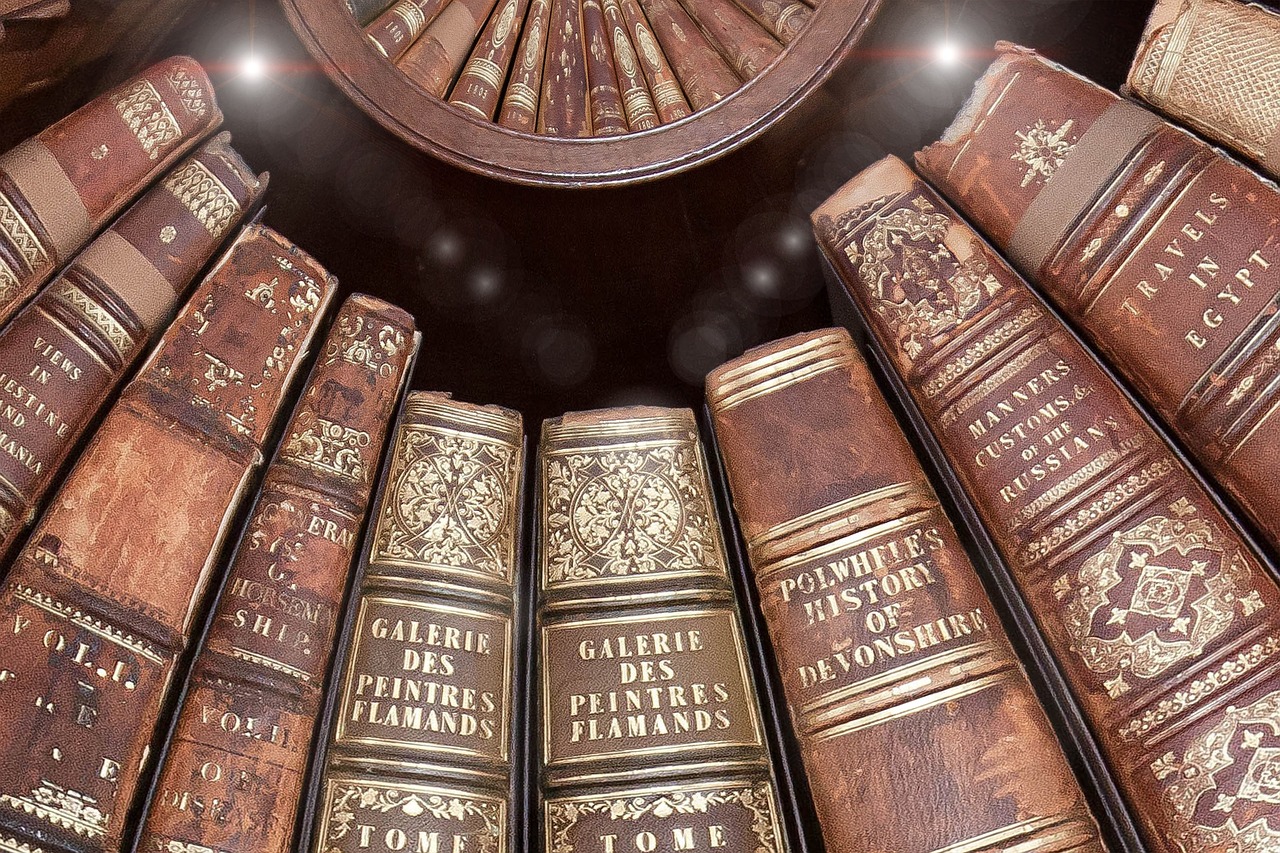
Hand-Stitching vs. Machine-Stitching
When it comes to attaching quilt binding, one of the most common dilemmas faced by quilters—especially beginners—is whether to use hand-stitching or machine-stitching. Each method has its own set of advantages and challenges, and the choice often boils down to personal preference, the specific project at hand, and the desired outcome. So, let's break it down!
Hand-stitching is often seen as the traditional approach. It allows for a meticulous and personalized finish, giving you the chance to ensure that every stitch is just right. Many quilters find that this method provides a sense of connection to their work, almost like a meditation. It can be a great way to unwind after a long day, and it allows for greater control over the final look of your binding. However, hand-stitching can be time-consuming, especially if you’re working on a larger quilt. It requires patience and practice to master the technique, but the results can be absolutely stunning.
On the flip side, machine-stitching is all about speed and efficiency. If you're looking to finish your quilt quickly, this method is your best friend. Using a sewing machine allows you to attach binding in a fraction of the time it would take by hand. Plus, machine-stitching can provide a more durable finish, which is especially important for quilts that will see a lot of use. However, the downside is that it may not offer the same level of precision and personal touch that hand-stitching does. Some quilters find that machine-stitching can lead to uneven edges or puckering if not done carefully.
To help you decide which method suits your needs best, consider the following factors:
- Time: How much time do you have to dedicate to your quilt? If you're in a hurry, machine-stitching might be the way to go.
- Skill Level: Are you comfortable using a sewing machine, or do you prefer the hands-on approach of hand-stitching?
- Project Size: For larger quilts, machine-stitching can save you a lot of time and effort.
- Final Look: Do you want a polished, professional finish, or are you going for a more handmade aesthetic?
Ultimately, both hand-stitching and machine-stitching can yield beautiful results, so don't be afraid to experiment! You might even find that a combination of both techniques works best for you. For example, you could use machine-stitching to attach the binding and then finish with hand-stitching for that extra touch of love. The key is to enjoy the process and let your creativity shine through!
Q: Can I use both hand-stitching and machine-stitching on the same quilt?
A: Absolutely! Many quilters use machine-stitching for the bulk of the work and then add hand-stitching for finishing touches. This combination can provide both durability and a personal touch.
Q: How do I avoid puckering when machine-stitching binding?
A: To avoid puckering, make sure to use the correct stitch length and tension settings on your sewing machine. Additionally, gently guide the fabric through the machine rather than pulling it.
Q: What type of thread is best for binding?
A: A good quality cotton thread is often recommended for quilt binding, as it provides strength and durability while blending well with most fabrics.

Finishing Touches
Once you've successfully attached the binding to your quilt, it's time to add those that can truly elevate your masterpiece from good to extraordinary. Just like a cherry on top of a sundae, these final details can make your quilt stand out and reflect your personal style. Whether you want to add a pop of color, texture, or a bit of whimsy, the possibilities are endless!
One of the simplest ways to enhance your quilt is through the use of embellishments. Think about incorporating decorative stitches, buttons, or even fabric flowers. These elements can add dimension and interest, making your quilt not just a functional piece but a work of art. For instance, you might consider using a contrasting thread to sew decorative stitches along the binding. This can create a lovely visual effect that ties the whole quilt together.
Another option is to use quilt labels. Not only do they serve as a personal touch, but they also provide a way to document the quilt's story. You can include details like the quilt's name, the date it was made, and even the recipient's name if it’s a gift. Labels can be sewn into the binding or attached to the back of the quilt, adding a sense of authenticity and connection to your creation. You can create your own labels using fabric markers, or you can print them on fabric sheets for a more polished look.
When it comes to the final inspection of your quilt, take a moment to press it thoroughly. This step is crucial, as it helps to eliminate any wrinkles and gives your quilt a professional finish. Use a steam iron to carefully press the seams and edges, but be cautious not to scorch the fabric. A well-pressed quilt not only looks better but also lays flatter, making it easier to display or use.
Finally, consider the presentation of your quilt. If you're gifting it, think about how you will wrap it up. A beautiful presentation can heighten the excitement of receiving a handmade quilt. You might opt for a simple ribbon or a more elaborate fabric wrap. Remember, the way you present your quilt is part of the experience, and it shows how much you care about your creation.
In conclusion, the finishing touches on your quilt are what truly make it shine. By adding embellishments, labels, and ensuring a professional press, you can transform your quilt into a cherished keepsake. So, take your time with these final details, and enjoy the process of making your quilt uniquely yours!
- What is the best fabric for quilt binding? Cotton is the most popular choice due to its durability and ease of use, but you can also experiment with other fabrics like linen or polyester blends for different effects.
- Can I use pre-made binding? Absolutely! Pre-made binding can save time and still provide a beautiful finish. Just choose the right color and width for your quilt.
- How do I fix mistakes in my binding? If you notice any mistakes, don’t panic! You can carefully unpick the stitches and reapply the binding as needed. It’s all part of the learning process!
- Is hand-stitching binding better than machine-stitching? It depends on your preference! Hand-stitching can give a more personal touch, while machine-stitching is faster and more durable. Choose what feels right for you!
Frequently Asked Questions
- What is quilt binding and why is it important?
Quilt binding is like the frame of a painting; it not only finishes the edges of your quilt but also protects it from wear and tear. It gives your quilt a polished look, making it appear more professional. Without binding, your quilt edges could fray, ruining your hard work!
- What are the different types of quilt binding?
There are several types of quilt binding, each with its own charm and purpose. The most common types include single-fold binding, which is simpler and great for beginners, and double-fold binding, which offers a more durable finish. Choosing the right type depends on your quilt's style and your comfort level with sewing.
- How do I choose the right fabric for quilt binding?
Choosing the right fabric is crucial! Consider the overall color scheme and design of your quilt. You want a fabric that complements your quilt but also stands out enough to frame it beautifully. Also, think about the fabric’s weight and durability; it should be sturdy enough to withstand use.
- What preparation steps are needed before binding a quilt?
Before you start binding, make sure your quilt edges are trimmed and squared up. This ensures a neat fit for your binding. It’s also a good idea to press your quilt to eliminate any wrinkles that could affect the binding process.
- What are the best techniques for attaching quilt binding?
Attaching quilt binding can feel intimidating, but it doesn’t have to be! Start by aligning the binding with the quilt edges and pinning it in place. You can use either hand-stitching or machine-stitching methods, depending on your preference. Each method has its benefits, so choose one that feels right for you!
- Should I hand-stitch or machine-stitch my quilt binding?
It really depends on your personal preference! Hand-stitching can provide a more traditional look and allows for greater control, while machine-stitching is quicker and can be more durable. Consider the look you want to achieve and how much time you have before making your decision.
- What finishing touches can I add to my quilt after binding?
Once your binding is attached, you can get creative with finishing touches! Consider adding embellishments like embroidery or fabric paint to personalize your quilt. You might also want to add a label to commemorate your work, making it a true keepsake.



















